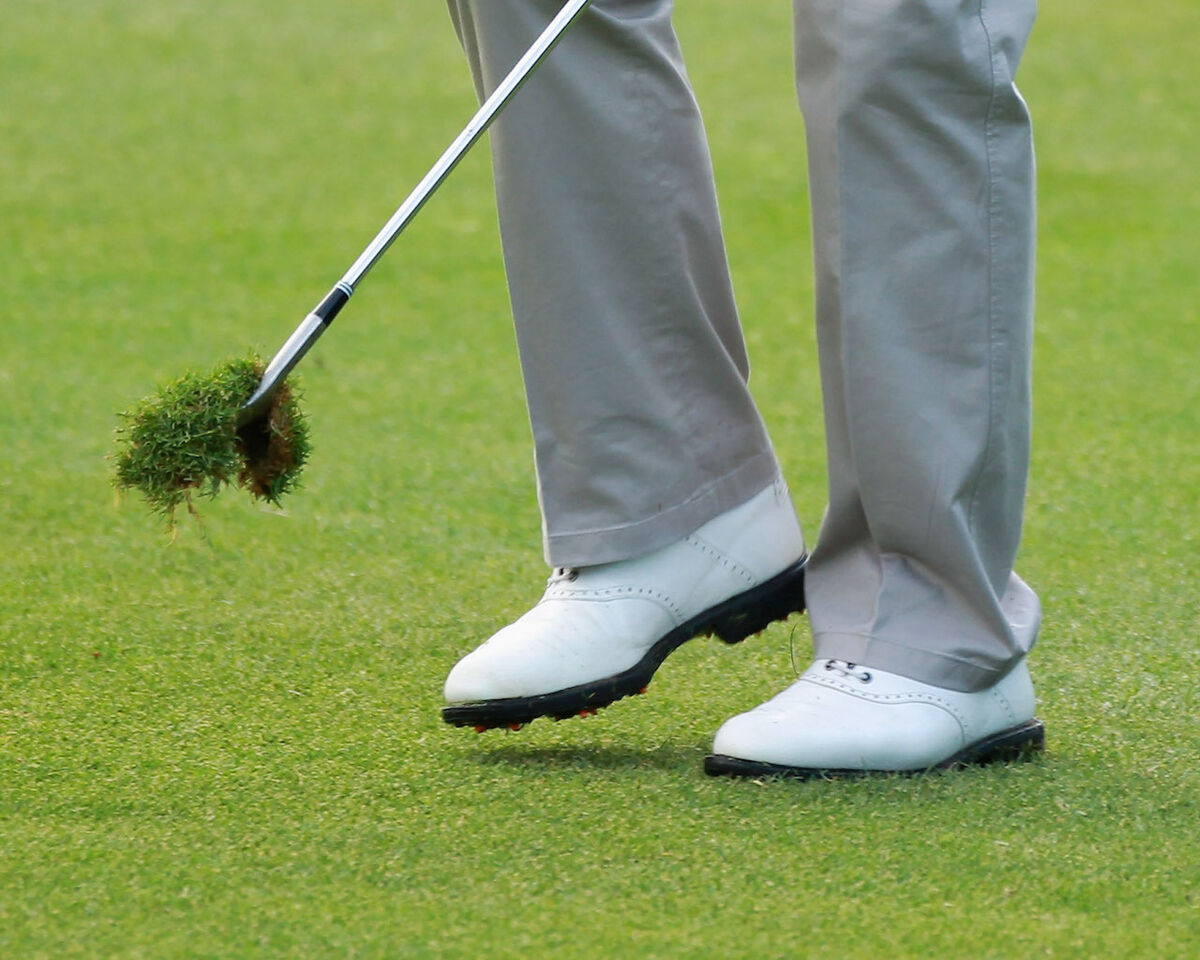Ultimate Golf Divot Guide for Every Golfer

A golf divot might seem like an afterthought when it comes to your golf game, but that chunk of grass can actually tell you a lot about your swing. If you’ve never paid attention to your divots before, this article will help give you a better understanding of what to look for before replacing your tiny piece of earth.
Golf divots come in all shapes and sizes, but that’s not necessarily a good thing. Believe it or not, there’s an ideal divot along with plenty of answers as to why yours looks the way it does. Let’s start with the basics.
What is a Golf Divot?
A divot is the strip of grass that comes out of the ground after impact when hitting an iron shot. As your clubhead impacts the golf ball, the leading edge of your iron digs into the turf ever so slightly. In a perfect iron swing where the bottom of the arc is between the golf ball and the hole, that leading edge continues to drive through the turf for a few inches after impact. The result is a divot that ends up somewhere in front of you.
Different clubs make different types of divots. Long irons, like a 4-iron, take a shallow divot because those clubs come into impact on a much more shallow angle. On the opposite end of the spectrum, wedges of any kind will take a much deeper divot because the club comes in with a steeper angle of attack.
You Took a Divot, Now What?
All golf courses are different, but you should always place your divot back in the spot it came from, with a light foot press after it’s in place. This allows the grass to regrow.
There are some courses that actually prefer you don’t replace your divots. This can be for numerous reasons, but they will instead rely on the course’s maintenance crew to re-seed those spots. You should always assume the course expects you to replace your divots, but it never hurts to ask what the course’s preference is.

What You Divot Says About You
Divots can actually tell you a lot about your golf swing and what’s happening at impact. Knowing some of these tells can help you on the course or when you’re practicing on the driving range. After your shot, stand behind where you hit and look at the divot compared to the direction the ball just traveled.
Straight Divot
If your divot is straight, this means your clubface was square at impact, which is a good thing. If your ball didn’t go to your intended target you most likely have an alignment issue to address.
Left Divot
If your divot angled to the left, you likely made impact with the clubface closed. This produces a hook.
Right Divot
If your divot is angled to the right, you likely made impact with the clubface open. This produces a slice.
Divot Behind Ball
If your shot didn’t go very far and a lot of grass came up at impact, you hit too far behind the ball, which is often called a fat shot. This can be caused by several swing flaws such as dropping your back shoulder or coming in too steep.
No Divot
You should never take a divot with your driver. Your fairway woods and hybrids should take extremely shallow divots, or none at all. With irons, however, you should always take a divot. This ensures that you are make proper impact with the golf ball. If you find that you’re not taking divots with your irons that means you’re hitting them thin and you need to address your swing.
The Ideal Divot
Believe it or not, there is an ideal divot, and yes, it’s what you see on television. A professional golfer’s swing is not only near flawless, but they also produce perfect divots. The ideal divot varies in depth depending on the club, but is about two to three inches wide and a few inches past the golf ball. Try to take a divot the size of a dollar bill. Or better yet, a hundred-dollar bill.
Conclusion
Taking the perfect divot comes along with your development in golf. The better the player, the better the divot. Use these helpful tips to gain a better understanding of your game. It could just be the answer you’re looking for.